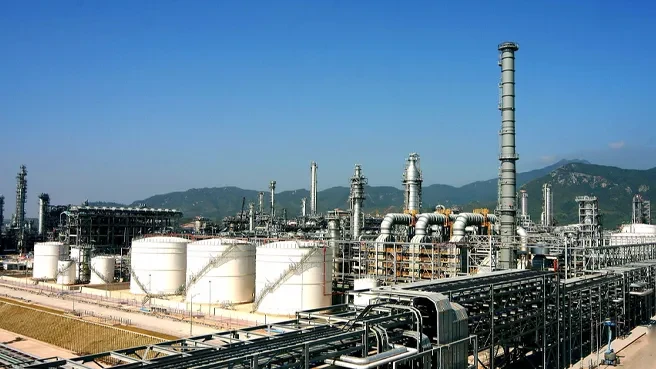
The Role of Cyanide in Gold Extraction Processes and Its Environmental Impact
Cyanide Used for Gold An Overview of Its Role in Gold Extraction
Cyanide has long been used in the mining industry, particularly in the extraction of gold. While this compound has proven effective in refining gold from ore, its use raises significant environmental and health concerns. This article delves into the process of cyanide use in gold extraction, its efficiency, associated risks, and the alternatives being explored.
The Cyanide Process Explained
The process of using cyanide to extract gold from ore is known as cyanidation. Initially developed in the late 19th century, cyanidation quickly became the dominant method for gold recovery due to its high efficiency. The basic principle involves crushing ore and then treating it with a dilute solution of sodium cyanide. When pumped over the crushed ore, cyanide reacts with gold to form a soluble complex, allowing the gold to be leached into the solution. This process can be divided into several steps
1. Crushing and Grinding The ore is crushed and ground into fine particles to allow for greater surface area contact with the cyanide solution.
2. Cyanide Leaching The ground ore is mixed with a cyanide solution and agitated. This allows for the optimal contact time for the cyanide to dissolve the gold.
3. Separation and Recovery The gold-laden solution is then separated from the remaining ore. Various methods, including carbon adsorption or precipitation, are used to recover the gold from the cyanide solution.
4. Refining The extracted gold is then refined to produce a purer product, often through electrolysis or other chemical processes.
Efficiency and Popularity
Cyanide leaching is favored in the gold mining industry for several reasons. It is a relatively inexpensive and effective method, capable of extracting gold even from low-grade ores. The high recovery rate of gold—often achieving over 90% efficiency—makes this method economically viable for mining companies. Furthermore, advancements in technology have improved the cyanidation process, reducing costs and increasing yields.
cyanide used for gold

Environmental and Health Concerns
Despite its efficiency, the use of cyanide in gold extraction comes with significant environmental hazards. Cyanide is highly toxic to aquatic life and can have devastating effects on local ecosystems if not handled properly. Accidental spills or leaks can contaminate water sources, leading to health risks for communities reliant on these water supplies.
The environmental impacts of cyanide use have sparked considerable debate and led to increased regulation in various countries. Some regions have banned cyanide use in mining altogether, while others have established strict guidelines for its handling and disposal. The challenge lies in balancing economic benefits with environmental stewardship and public health.
Alternatives to Cyanide
In response to environmental concerns, researchers and mining companies are actively exploring alternative methods for gold extraction that reduce or eliminate the need for cyanide. Some promising alternatives include
- Thiosulfate Leaching This process uses thiosulfate, a less toxic chemical, to dissolve gold from ores. Although still in the experimental stage for many applications, it has demonstrated potential in certain types of ore.
- Biotechnology The use of microorganisms in bioleaching is a growing field. Some bacteria can naturally extract metals from ores without the need for harmful chemicals, presenting a promising avenue for sustainable mining practices.
- Gravity Concentration This method leverages the density differences between gold and other minerals. By using gravity-based systems, miners can separate gold with minimal chemical processing, thus reducing environmental risks.
Conclusion
Cyanide remains a prominent method for gold extraction due to its efficiency and economic viability. However, the environmental and health risks associated with its use cannot be overlooked. As the mining industry faces increasing scrutiny concerning sustainability and ecological impact, the exploration of alternative extraction methods is not only prudent but necessary. By investing in safer technologies and practices, the gold mining sector can continue to thrive while minimizing harm to the planet and its inhabitants. The future of gold extraction may well hinge on finding a balance between economic interests and environmental responsibility.
-
Pure Sodium Dichloroisocyanurate Dihydrate | Powerful DisinfectantNewsAug.29,2025
-
Industrial Chemicals: Quality & Purity for Every IndustryNewsAug.28,2025
-
Nitrile Rubber Honoring Strict Production StandardsNewsAug.22,2025
-
Aspartame Ingredients Honoring Food Safety ValuesNewsAug.22,2025
-
Fertilizer for Balanced Plant NutritionNewsAug.22,2025
-
Cyanide Gold Processing with High Purity AdditivesNewsAug.22,2025
-
Formic Acid in Textile Dyeing ApplicationsNewsAug.22,2025
Hebei Tenger Chemical Technology Co., Ltd. focuses on the chemical industry and is committed to the export service of chemical raw materials.
-

view more DiethanolisopropanolamineIn the ever-growing field of chemical solutions, diethanolisopropanolamine (DEIPA) stands out as a versatile and important compound. Due to its unique chemical structure and properties, DEIPA is of interest to various industries including construction, personal care, and agriculture. -

view more TriisopropanolamineTriisopropanolamine (TIPA) alkanol amine substance, is a kind of alcohol amine compound with amino and alcohol hydroxyl, and because of its molecules contains both amino and hydroxyl. -

view more Tetramethyl Thiuram DisulfideTetramethyl thiuram disulfide, also known as TMTD, is a white to light-yellow powder with a distinct sulfur-like odor. It is soluble in organic solvents such as benzene, acetone, and ethyl acetate, making it highly versatile for use in different formulations. TMTD is known for its excellent vulcanization acceleration properties, which makes it a key ingredient in the production of rubber products. Additionally, it acts as an effective fungicide and bactericide, making it valuable in agricultural applications. Its high purity and stability ensure consistent performance, making it a preferred choice for manufacturers across various industries.





